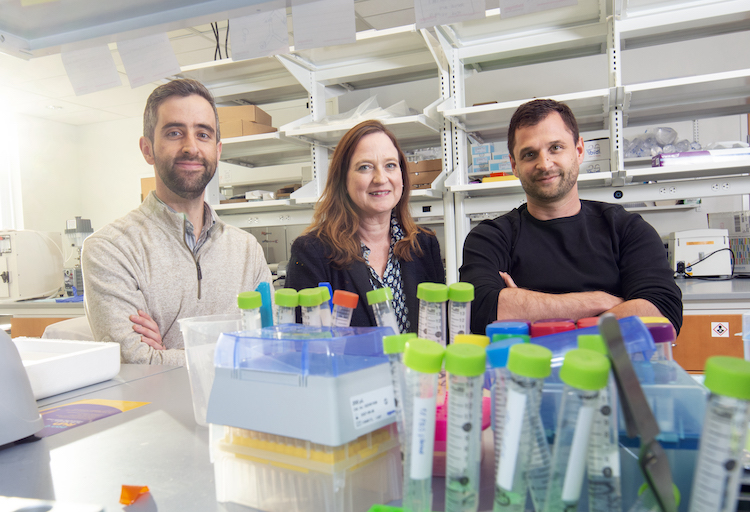There are a lot of ways to cut film, as many cinemas and directors can attest. But biofilmsãwhich settle on numerous surfaces, including skinãcan contain harmful bacteria and get in the way of healing wounds.

Assistant Professors in the Department of and in the at ÅåòƧÓǨû§ have a shared interest in using nanotechnology for medical applications, as well as a shared history. Both worked as postdocs at the Massachusetts Institute of Technology, but it wasnãt until they started working at Mason that their paths crossed. Partnering up with Professor , a microbiologist in the at ÅåòƧÓǨû§, they applied for and recently won the (NIBIB) R21 Trailblazer award.
Through the award funds, the team will use their backgrounds and spend about three years developing a brand-new technology that dissolves harmful biofilms, without harsh removal methods.
Some biofilms are relatively benign, and many folks have them on the surfaces of their teeth. But harmful biofilms can develop throughout the body for many reasons, like on the skin surface as a result of trauma, and cause potentially fatal infections.
Moranãs primary research focus is on ãnanoswimmers"ãtiny particles that propel themselves in liquids or biological media. Many researchers are developing them to use in the body, to deliver therapeutic payloads (like antibiotics) to hard-to-reach locations.
ãWhat weãre trying to do is develop self-propelled particles that penetrate deep into the thick matrix of the biofilm, dissolving it and also serving as a carrier to deliver antibiotics at the same time,ã says Veneziano.
To manufacture the self-propelled particles, the team is relying on Venezianoãs specialty: DNA origami, which is a method that involves precisely assembling DNA molecules into tiny two- and three-dimensional shapes.
Although using enzymes to dissolve the biofilms isnãt new, attaching them onto DNA origami nanoparticles is, which is the trailblazing path Veneziano, van Hoek and Moran will follow.
ãIt all started with a ãwhat if we tried this?ã type of conversation. We bounced ideas off each other, talking about ways we might make DNA nanoparticles swim, and how that capability might be useful in certain medical situations. That back-and-forth eventually led to this award,ã says Moran. ãWeãre excited to get started.ã
is an opportunity for new and early-stage investigators to pursue research programs of high interest to the NIBIB at the interface of the life sciences with engineering and the physical sciences. A Trailblazer project may be exploratory, developmental, proof of concept, or high risk/high impact, and may be technology design-directed, discovery-driven, or hypothesis-driven.ä»
In This Story
Related News
- July 8, 2024
- May 31, 2024
- April 8, 2024
- March 13, 2024
- February 29, 2024
ä»
ä»
